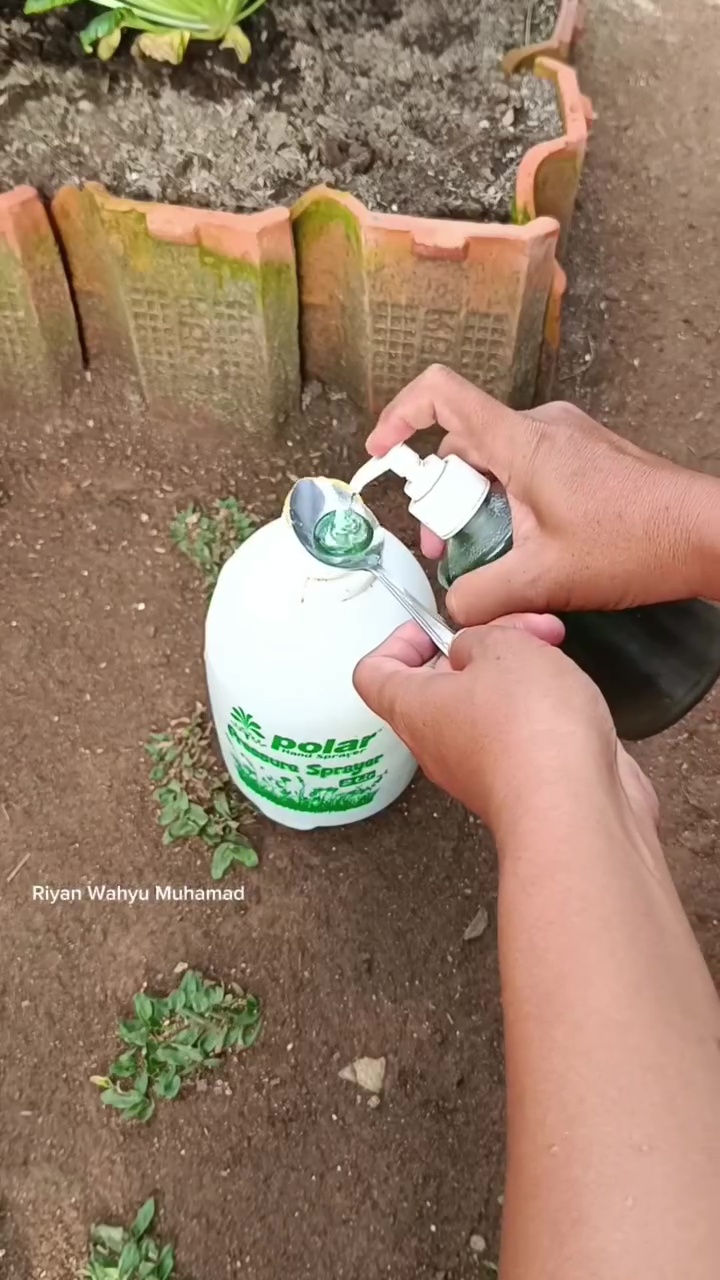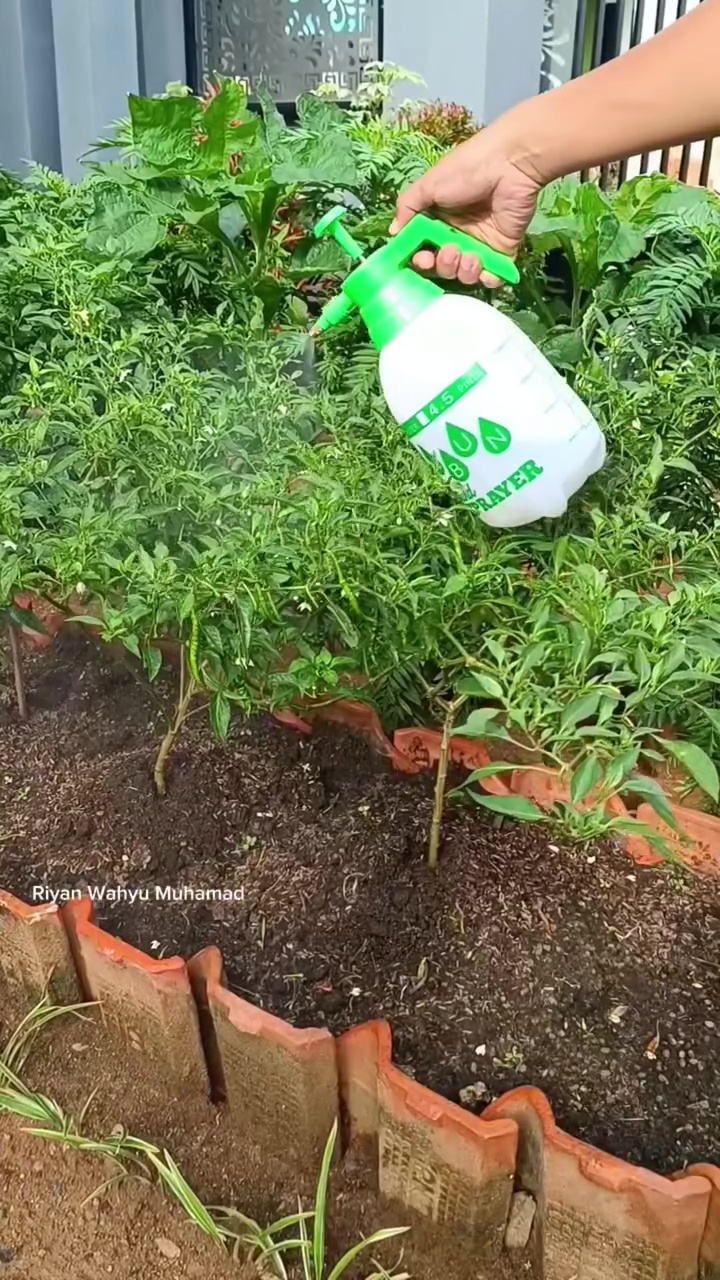Instagram/@riyan.wahyumuhamad
Brilio.net – The rainy season is a challenge for plant lovers, especially those who grow vegetables such as chilies. High rainfall causes soil moisture to increase drastically, making plants more susceptible to disease. If not handled properly, this condition can cause plants to wilt easily and even rot.
Chili plants are among the most sensitive to extreme weather changes. When it rains continuously, water often pools around the roots and causes root rot or fruit to rot before it can be harvested. The leaves are also easily attacked by fungi, causing plant growth to slow down and yields far from expectations.
The problem is, leaving the soil waterlogged or the leaves too damp can quickly trigger fungal and bacterial attacks. Therefore, special steps are needed to keep chili plants healthy even in the middle of the rainy season. With proper care, the risk of rot can be reduced and the harvest remains abundant.
Apart from not letting the soil become waterlogged, you can immediately prevent chili rot by other natural means, namely using kitchen ingredients. There are a number of kitchen ingredients that can help eradicate the fungus and bacteria that cause rotten chilies.
Want to know what kitchen ingredients are in question? Check out the further review provided BrilioFood summarized from Instagram @riyan.wahyumuhamad on Thursday (13/11).
How to prevent rotting chilies during the rainy season.
1. Mix dish soap and baking soda.

photo: Instagram/@riyan.wahyumuhamad
The first step you can take is to make a natural protective solution for chili plants. Just mix one tablespoon of dish soap with one tablespoon of baking soda in two liters of clean water. This mixture is effective in helping reduce the growth of fungi and bacteria which usually appear due to damp weather during the rainy season.
2. Stir until completely smooth before use.
Make sure the soap and baking soda solution is stirred until it is completely smooth. The goal is that the ingredients blend perfectly and provide maximum results when sprayed on plants. If the solution is not mixed thoroughly, the effect can be less than optimal, and it may even leave stains on the chili leaves.
3. Spray evenly over all parts of the plant.

photo: Instagram/@riyan.wahyumuhamad
Once the solution is ready, spray all parts of the chili plant—from the leaves, stems, to the area around the fruit. Spray in the morning or evening so that the plants are not stressed by direct sunlight. Apart from preventing rot, this method can also help keep the leaves fresh and avoid fungal attacks.
4. Repeat spraying regularly every week.

photo: Instagram/@riyan.wahyumuhamad
For maximum results, spraying should be done regularly once a week during the rainy season. High humidity means mold can grow quickly, so regular maintenance is very important to keep plants healthy. If the weather is very humid, you can increase the frequency to twice a week.
FAQ Regarding the benefits of baking soda for plants.
It turns out that baking soda is not only useful in the kitchen, but also has many benefits for plants. Starting from preventing fungus, repelling pests, to keeping the soil pH balanced, everything can be done with this simple ingredient.
1. Can baking soda help treat fungus on plant leaves?
Very possible. Baking soda has alkaline properties which help neutralize the acidic environment where mold can easily grow. By mixing a spoonful of baking soda with water and spraying it on the leaves, fungi such as powdery mildew can be prevented before they spread.
2. Is it safe to use baking soda for all types of plants?
Generally safe, but you still need to be careful with plants with thin or sensitive leaves such as young roses and certain ornamental plants. It’s best to do a test first on one leaf before spraying the entire plant. If the leaves do not show discoloration or burning within 24 hours, it is safe to use.
3. How does baking soda help maintain soil pH?
Baking soda can help slowly reduce soil acidity, especially if the soil is too acidic. By neutralizing the pH, plants can absorb nutrients more optimally. However, don’t use it too often because it can make the soil too alkaline and interfere with root growth.
4. Can baking soda be used to repel pests?
Yes, baking soda can repel small pests such as aphids, ants or caterpillars. Mix baking soda with a little liquid soap and water, then spray it on the affected part of the plant. The aroma and alkaline nature of this solution can discourage pests from approaching without damaging the plants.
5. When is the best time to spray plants with a baking soda solution?
The best time is morning or evening when the temperature is not too hot. If sprayed during the day, the leaves can burn due to the reaction between the baking soda and the heat of the sun. Apart from that, it is best to spray every 7-10 days for optimal results without damaging the plants.
(brl/psa)
News
Berita
News Flash
Blog
Technology
Sports
Sport
Football
Tips
Finance
Berita Terkini
Berita Terbaru
Berita Kekinian
News
Berita Terkini
Olahraga
Pasang Internet Myrepublic
Jasa Import China
Jasa Import Door to Door
Comments are closed, but trackbacks and pingbacks are open.